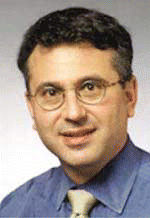Staffed by nurse practitioners and/or physician’s assistants, these clinics typically provide acute care services for minor problems for patients over 18 months of age.
Explore This Issue
September 2006The most common problems treated include pharyngitis, otitis media, conjunctivitis, bronchitis, sinusitis, and urinary tract infections, said Woody Woodburn, MD, Chief Medical Officer and Vice President of MinuteClinic.
MinuteClinic is the oldest retail health-care provider. We got started at the end of 1999, and we currently have 83 clinics in 10 states. By the end of the year we will have close to 250 clinics, Dr. Woodburn said.
MinuteClinic, which was acquired by CVS Corporation on July 12, 2006, includes locations in Atlanta, Baltimore, Charlotte, Columbus, Indianapolis, the Maryland Capital area, Minneapolis-St. Paul, Nashville, Orlando, Providence/Woonsocket, Raleigh/Durham, and Seattle.
Although acquired by CVS, Dr. Woodburn said MinuteClinics will not be exclusive to CVS.
Staffing and Guidelines
MinuteClinics are organized around small examination rooms in retail locations, Dr. Woodburn said. A nurse practitioner or a physician’s assistant staffs the clinic and provides diagnoses, treatment recommendations, and prescriptions for people with common family illnesses.
If you talk to patients, very often now in our community especially, we find that if someone has an ear infection and they went to a family doctor, usually they were seen by a nurse practitioner or a physician’s assistant anyway. – -Jack B. Anon, MD
We hire experienced family practice providers; we have people who are highly qualified and experienced in family medicine who are able to handle pediatric and adult issues, Dr. Woodburn said. Since these practitioners come to MinuteClinics with experience, training, credentials, and licensure, we then can, with about two weeks of education, get them up to speed on our operational systems.
MinuteClinics uses national clinical practice guidelines that have been developed by expert groups such as the American Academy of Family Practice and a regional group that is becoming national, called the Institute for Clinical Systems Improvement, Dr. Woodburn said. There are also AMA guidelines for walk-in clinics. A critical part of our foundation is national clinical practice guidelines.
A proprietary electronic medial record system that incorporates national clinical guidelines is in use at MinuteClinics. Also, an electronic chart review system allows overseeing physicians to do random samples every week or every month, assuring that the clinics provide high-quality and consistent care day in and day out, reported Dr. Woodburn.
Physician Participation
Physician oversight is a large component of the MinuteClinic program, Dr. Woodburn said. In every city where we have clinics, we have local physicians who are board certified, actively practicing primary care or family physicians, or emergency physicians who provide medical directorship activities. These are very high-quality, actively working physicians who are well known in the community, he added.

Leave a Reply